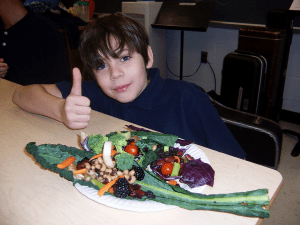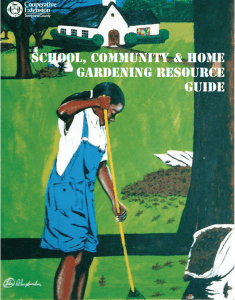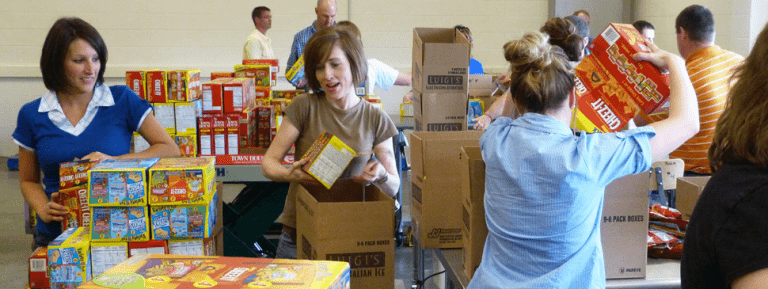Childhood Nutrition & School Food Interventions in the Southern Tier

In Tompkins County, about 35% of children qualify for free or reduced meals in schools, meaning their families’ incomes are at least 130% of the federal poverty level. Subsidized school meal qualification rates are commonly used as population level poverty indicators. The reliance on this measure of poverty also speaks to the fundamentality of childhood nutritional security for public health.
School food interventions are crucial strategies for promoting public health. The majority of youth attend schools and many of them, especially those facing poverty, consume a large proportion of daily calories in school. Childhood obesity, hunger, and nutritional insecurity coexist as costly public health crises with negative impacts on psychological, behavioral and learning outcomes. In 2015, 13.1 million children in the United States lived in households facing food insecurity.

The School Day
Agencies tasked with improving population level childhood nutrition often work with the school system to provide children and their families access to nutritious food. Most children attend school most of the year, and many eat most of their daily calories during the school day. Programs partner with school districts across Tompkins County and New York’s Southern Tier to provide healthier entrees, healthier snacks, and experiential learning opportunities through school gardens, farm field trips, and classroom food literacy activities.
The Coalition for Healthy School Food introduces plant-based, multicultural entrées from local farms to Ithaca City School menus. Cornell Cooperative Extension and The Food Studies Institute teach nutrition and garden-based learning in schools. The Youth Farm Project grows school food, hosts K-12 students through farm field trips and youth employment programming, and provides Fresh Snacks to elementary classrooms.
Outside of School
Of course, there are many times when children are not in school—weekends, summer, holiday breaks, and before and after school day hours. Agencies also partner with school districts to supply nutritious food access outside of school hours, though it can be more challenging to reach as many children.

The Food Bank of the Southern Tier operates the BackPack Program to help feed hungry kids on weekends, and works with Summer Food Service to improve food access to youth facing food insecurity during summer months. The Food and Health Network of South Central New York also has great resources about summer food service in our region. Many afterschool programs, town libraries, and other community centers across the Southern Tier are also prioritizing healthy food access and education.
Equitable nutritional security is foundational for learning and growing in kids. Cornell’s MPH program’s regional partners, like those mentioned above, are helping to improve public health in our local communities by reaching youth and their families in schools, where institutional support can expand their reach and impact.
This article is written by Audrey Baker, MPA. Baker is the Youth Farm Project’s Farm to School Coordinator, as well as Accreditation and Evaluation Specialist for the MPH at Cornell University.
To find out how to get involved with any of the above mentioned programs, please visit their website links (above). For more information about how to get involved with farm-to-school efforts in Tompkins County, contact Audrey Baker at youthfarm2school@gmail.com.
